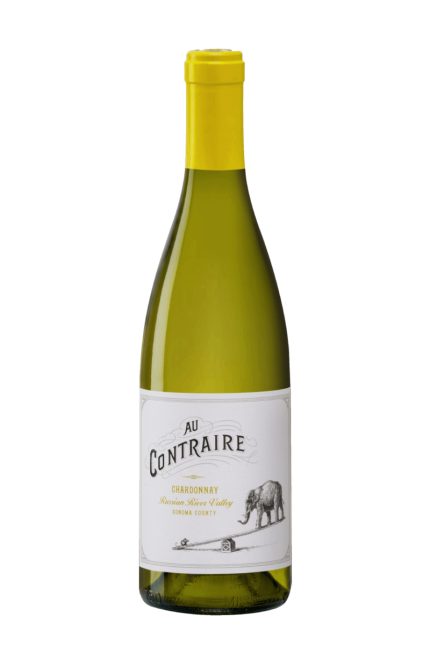Chardonnay is one of the most celebrated and versatile white wine varietals in the world. With its roots firmly planted in the Burgundy region of France, Chardonnay has transcended geographical and cultural boundaries to become a staple in wine lists globally. This article delves into the history, characteristics, regional variations, food pairings, and the modern landscape of Chardonnay, revealing why it continues to capture the hearts of wine enthusiasts everywhere.
Origins and History
chardonnay wine traces its origins back to the Burgundy region of France, where it was first cultivated in the village of Chardonnay. Historical records suggest that the grape has been grown since at least the 15th century. Over the centuries, Chardonnay has become a vital component of the Burgundy wine economy, with the finest examples emerging from prestigious appellations such as Meursault, Puligny-Montrachet, and Chablis.
The grape gained international acclaim in the 20th century, particularly with the rise of the California wine industry in the 1970s. Pioneering producers in Napa Valley and Sonoma County began experimenting with Chardonnay, leading to an explosion in its popularity. Today, Chardonnay is the most widely planted white grape variety in the world, thriving in diverse climates and terroirs.
Characteristics of Chardonnay
Chardonnay is known for its incredible versatility, which is largely due to its ability to express the terroir of the region in which it is grown. Here are some key characteristics that define Chardonnay:
1. Flavor Profile
The flavor profile of Chardonnay can vary significantly based on climate, winemaking techniques, and the age of the wine. Generally, Chardonnay is known for its range of flavors:
- Cool Climate: In cooler regions, such as Chablis or parts of New Zealand, Chardonnay tends to be high in acidity with flavors of green apple, citrus, and sometimes flint or minerality.
- Warm Climate: In warmer areas, like California or Australia, the grape often expresses riper, fruitier notes, including tropical fruits, peaches, and melons, sometimes accompanied by buttery or creamy textures.
2. Oak Influence
Chardonnay is frequently aged in oak barrels, which can impart additional flavors such as vanilla, spice, and toast. This oak aging process often undergoes malolactic fermentation, which softens the acidity and adds a creamy, buttery mouthfeel.
- Oaked Chardonnay: This style is characterized by rich flavors and a full-bodied texture, commonly found in Napa Valley wines.
- Unoaked Chardonnay: In contrast, unoaked versions emphasize the grape’s natural fruit characteristics, offering a fresher and crisper profile, which is popular among those seeking a more straightforward expression of Chardonnay.
3. Aging Potential
Chardonnay has excellent aging potential, particularly those from esteemed regions. Over time, wines can develop complex flavors of honey, nuts, and dried fruits, while also gaining a greater depth of character. Many top-tier Chardonnays are designed to be cellared for several years or even decades.
Regional Variations
Chardonnay is cultivated in many wine-producing regions around the world, each imparting unique characteristics to the wine. Here are some notable regions:
1. France
- Burgundy: The heartland of Chardonnay, Burgundy produces some of the finest examples in the world. The wines vary from the mineral-driven Chablis to the rich, full-bodied white Burgundies from Meursault and Pouilly-Fuissé.
- Champagne: In the production of Champagne, Chardonnay is one of the key varietals, contributing elegance and finesse to the sparkling wines. Non-vintage and vintage Blanc de Blancs (100% Chardonnay) are particularly prized.
2. United States
- California: California is renowned for its diverse Chardonnay styles, particularly in Napa Valley and Sonoma County. The warm climate produces ripe, fruit-forward wines, often with pronounced oak influence. Many winemakers are now experimenting with cooler coastal regions to create fresher expressions.
- Oregon: Known for cooler temperatures, Oregon produces Chardonnays that are often more restrained and mineral-driven, showcasing bright acidity and citrus flavors.
3. Australia
Regions like Margaret River and Adelaide Hills are gaining recognition for high-quality Chardonnay. Australian Chardonnays can range from rich and buttery to bright and zesty, often reflecting a balance between fruit intensity and acidity.
4. New Zealand
New Zealand has emerged as a player in the Chardonnay market, particularly from regions like Marlborough and Hawke’s Bay. The wines often exhibit vibrant acidity and tropical fruit flavors, with some producers leaning toward a more restrained style.
Food Pairing
Chardonnay’s versatility makes it an excellent companion for a wide range of dishes. Here are some classic pairings:
- Seafood: Crisp, mineral-driven Chardonnays pair beautifully with oysters and shellfish, while richer styles complement grilled fish or seafood dishes with creamy sauces.
- Poultry: Chardonnay pairs well with chicken, especially when prepared with buttery or creamy sauces. Roasted chicken with herbs is a classic match.
- Cheese: Creamy cheeses like Brie or Camembert harmonize well with Chardonnay’s texture, while aged Cheddar can balance the richer, oaked styles.
- Vegetarian Dishes: Roasted vegetables and creamy pasta dishes complement Chardonnay, especially those enhanced by herbs or spices.
The Modern Chardonnay Scene
The perception of chardonnay wine has evolved in recent years. While the “ABC” (Anything But Chardonnay) movement arose in response to heavily oaked styles, many winemakers have embraced a return to fresher, more balanced expressions.
Producers are increasingly focused on sustainable practices, organic farming, and innovative winemaking techniques, resulting in exciting new styles of Chardonnay that highlight terroir and authenticity. The emergence of “minimal intervention” winemaking is also gaining traction, allowing the true characteristics of the grape to shine through.
Conclusion
Chardonnay remains a beloved choice among wine lovers worldwide. Its adaptability and wide range of expressions ensure that there is a Chardonnay for every palate and occasion. Whether you prefer the crisp, mineral-driven styles of Chablis or the luscious, oaky versions from Napa Valley, this grape has something to offer everyone.
As we move forward, the ongoing exploration of Chardonnay’s potential promises to keep this classic varietal at the forefront of the wine world. From its rich history to its modern interpretations, Chardonnay invites both seasoned connoisseurs and newcomers to savor its many nuances, ensuring its place as a timeless favorite in the ever-evolving landscape of wine.



